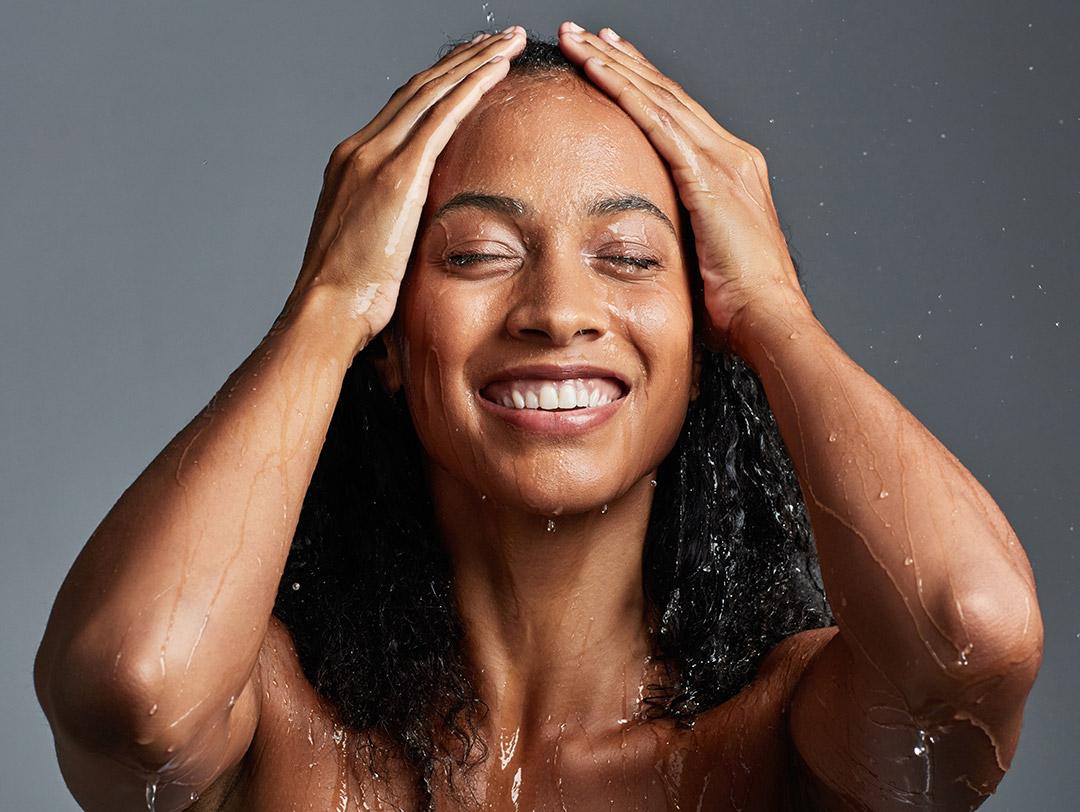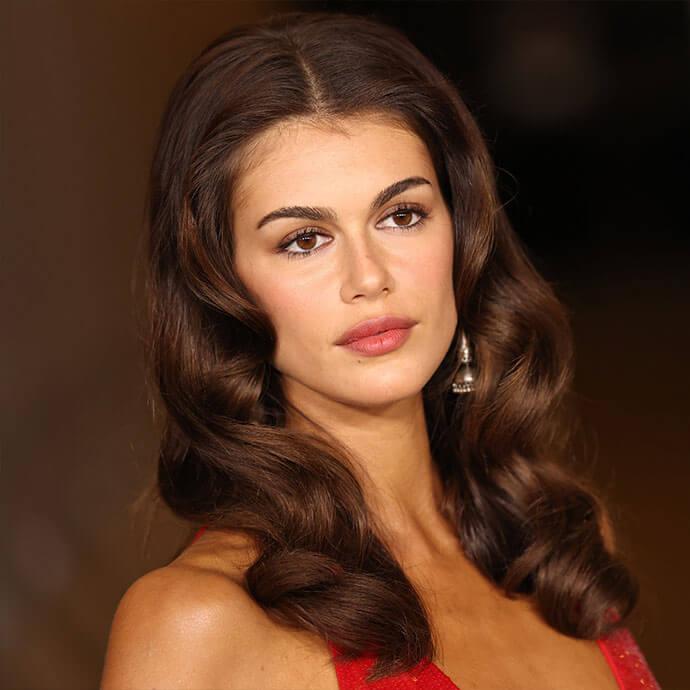Everything You Need to Know About Co-washing, According to a Natural Hair Expert



Kindra Moné


As someone with curly or textured hair, it’s likely that you’re on the quest for the perfect wash day routine to leave you with hydrated, defined curls and waves—but what if we told you that the ultimate wash day might not even involve shampoo? If yournatural curlsare looking dry, limp, or just not like their usually-bouncy selves, co-washing can be an easy way to revitalize them. Co-washing ditches the shampoo and instead uses conditioner to bring life, moisture, and bounce back to your curly hair.
Ready to learn a little more about co-washing? We tapped into the expert knowledge of tight curl educator Aishia Strickland for the run-down on what it is, the benefits of co-washing, and how to start co-washing like a pro.


It's about glam time you treated yourself.
MEET THE EXPERT
Aishia Strickland is a licensed hair stylist, tight curl educator, and a digital content creator. She is also the co-founder of Black Curl Magic, a digital hub dedicated to educating naturalistas on the art and science of their naturally curly hair.
So, what exactly is co-washing?
According to Aisha, “co-washing is one of the most misunderstood words in the natural hair lexicon. Co-washing is a verb, it is the action of using conditioner (like you would shampoo) to refresh your hair in between shampoos. It is not meant to replace shampoo altogether…we still need to use shampoo regularly!” Think of co-washing as a hair refresh, rather than the hair reset that comes with shampoo.
Choosing to co-wash between shampoos can restore moisture to curly hair, which needs a lot of hydration to look its best. Traditional shampoos can be problematic for curly hairstyles because they often contain harsh sulfates which can strip your hair of important natural oils, leaving it brittle, dry, and prone to breakage and frizz.
But how does co-washing clean your hair? Most conditioners actually contain small traces of cleansing agents (look for cetrimonium and behentrimonium chloride in a conditioner’s ingredient list) that can still work to gently refresh without leaving your hair feeling dry. By shampooing less and co-washing more, an unprecedented amount of moisture will return to the hair, delivering the hydrated curls we all strive for.
A step-by-step guide to co-washing
Okay, so we've covered the basics and now you're ready to get co-washing. Here are a few steps to follow to achieve maximum curl hydration.
Step 1: Wet your hair
Water is your hair’s friend and the actual source of the moisture that your hair needs. Begin with soaking wet hair to help loosen debris in the hair and make it easy to evenly distribute the product into the scalp and throughout the hair. Aishia notes that “quality conditioners need lots of water.”
Step 2: Apply conditioner to wet hair
There’s no set rule for how much conditioner you should be using. It will depend entirely on how thick, thin, long, or short your hair is. You should use enough so that your strands are all fully coated from the scalp to the ends. Like most curly-haired people, you’ll likely always use 2X the conditioner compared to your shampoo.
Step 3: Massage conditioner into your hair from scalp to ends
Lather the conditioner through the rest of your hair for at least a full minute. Let the conditioner sit in the hair for three to five minutes, maybe more if it needs some extra TLC.
Step 4: Detangle your hair.
While your hair is soaking wet and slippery from conditioner, this is primetime to detangle. Always work your way from the ends towards the roots with your fingers or a gentle detangling brush. Finally, rinse the conditioner out with cool water until all the product feels like it’s fully rinsed out. That's it!
Is co-washing right for you?
Since co-washing is so moisturizing, it's best for people with naturally curly hair that hasn't been chemically straightened. If you have color-treated hair that also happens to be curly, co-washing is an especially great option to avoid over-washing your hair and stripping away pigment —meaning your hair color will last longer. Co-washing isn't for everyone, though. Anyone with fine, straight hair or an oily scalp may want to avoid this haircare method as it’s not great for removing hair of excess oil. Afterall, co-washing is best for preserving natural oils!
What’s the difference between co-washing and conditioning?
The main difference between co-washing and conditioning is the intended use. Co-washing is the action of using conditioner to refresh the hair,” explains Aisha. “Conditioning is the step that follows shampoo. Conditioner has the job of helping to smooth the cuticle, the outer layer of the hair, locking in the moisture while leaving behind humectants and emollients on our strands.”
Co-washing is amazing and can definitely prevent stripping your hair of its natural oils, but don’t get it twisted. Aisha doesn’t recommend tossing out your shampoo entirely. She tells her clients to shampoo in between co-washes to prevent buildup on the scalp “as cleansing with shampoo is not only a part of good hygiene, but it’s also key to achieving moisture and hydration, thus leading to healthy hair.”
6 co-wash products to start using ASAP
You can use almost any conditioner to co-wash, but avoid silicones (usually listed as dimethicone in a conditioner’s ingredient list). Silicone is often added to conditioners to boost shine, but the buildup overtime can actually prevent moisture from penetrating the hair, leading to damage long-term.
If you’re still unsure about the whole co-washing thing, start with a cleansing conditioner or “no poo” (short for “no shampoo”). Think of them as a kind of shampoo-conditioner hybrid. They are more cleansing than a standard conditioner but don’t contain the harsh sulfates and parabens found in most shampoos.
The Aveda Be Curly Co-Wash is a great cleansing conditioner for all curl types. It’s sulfate-free and removes dirt and product buildup while moisturizing with organic babassu oil.
For fine hair and color-treated hair, try R + CO Analog Cleansing Foam. It’s lightweight texture makes it manageable enough for loose textures or even straight hair, while the gentle formula preserves hair color.
Shea Moisture African Black Soap Bamboo Charcoal Deep Conditioner is one of our favorite conditioners for co-washing thick hair because it has balancing ingredients like charcoal and African Black Soap to reduce excess oil and soften your hair while encouraging a healthy scalp.
Briogeo Be Gentle, Be Kind Avocado + Quinoa Co-Wash is a fan-favorite because it effectively cleanses, conditions, detangles, and nourishes hair. It features avocado oil, quinoa extract, and shea butter for deep hydration.
For a slippery detangler and gentle cleansing, Eden Bodyworks Coconut Shea Cleansing Co-Wash is the way to go. Users love the silky texture that leaves your hair feeling soft and refreshed.
If you’re using co-washing frequently, you definitely want to incorporate a clarifying shampoo into your routine. These are powerful cleansers that you'll only want to use about once or twice a month to remove product build-up and other leftover residue co-washing might miss.
Looking for more new products to incorporate your routine? Take our Beauty Quiz now to get your first IPSY glam bag. Already an Ipster? Refer your friends to earn points, which you can use toward products. Either way, don’t forget to check us out on Instagram and Twitter @IPSY.
Share this article with your curly-haired friends by clicking the icons below!
Liked this post? Share!
Related Stories


Hair
6 Hair Trends Set to Take Over in 2026, From Bixie Cuts to Bouncy Blowouts
Published on Dec 5, 2025 • 5 min read


Hair
21 Easy Hairstyles to Enhance Your Natural Curls and Coils
Published on Dec 3, 2025 • 11 min read


Hair
The Ultimate Guide to Styling Short Hair
Published on Dec 1, 2025 • 11 min read


Hair
From Bangs to Blonde: The Hair Trends Taking Over 2025
Published on Dec 16, 2024 • 5 min read


Hair
Scalp Exfoliation Is the Key to Healthier Hair—Here’s How to Do It Correctly
Published on Nov 21, 2025 • 9 min read


Hair
The 10 Best Hair Masks and Conditioners to Promote Hair Growth
Published on Mar 11, 2024


Hair
20 Trendy Hairstyles That’ll Make You the Life of the (Holiday) Party
Published on Oct 15, 2025 • 9 min read


Hair
Easy Thanksgiving Hairstyles to Look Polished While You Feast
Published on Oct 2, 2025 • 6 min read


Beauty Picked Just for You
Get 5 products worth up to $70
Plus exclusive access to epic deals up to 80% off
Starting at just $14/month. Cancel anytime.